In Addition
Obj 16 Sprawa 4
July / August 2025
1.Health Article
Healthy Heart is in your hands!
“Research has revealed that non-vegetarians and alcoholic addicts are more prone to heart ailments than vegetarians. Vegetarian food that is consumed should be balanced and wholesome, it should contain liberal doses of vitamin C and vitamin E, which are available in vegetables like carrots. The presence of these vitamins prevents heart ailments to a large measure.”…Sathya Sai Baba1
1. Know your heart!
1.1 Role: Our heart, a fist-sized cone-shaped muscular organ, hardly weighing 8-12 ounces (227- 340gm) in an adult, pumps and moves blood throughout the body (more than 7,500 litres per day), delivers oxygen and nutrients to cells, maintains blood pressure, and ensures continuous blood supply to support the functions of other organs; it is directed by the brain and the nervous system.2-4
1.2 Structure: Located slightly to the left of the centre of the chest, between the lungs, and behind the sternum (breastbone), heart is enclosed within a double-walled sac called 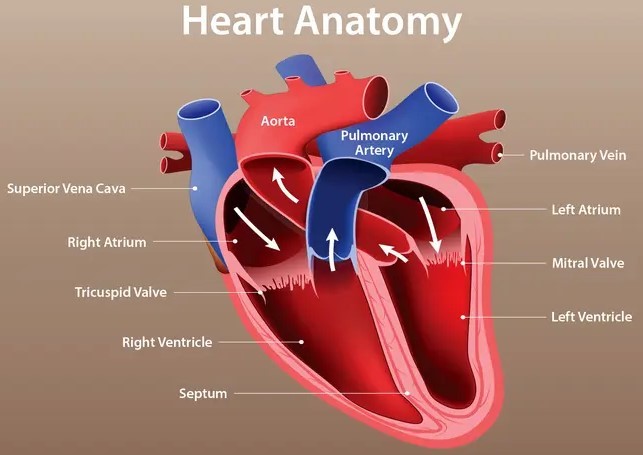 Pericardium that produces fluid to protect and lubricate it. The heart itself is structured like a building with three layered muscular walls that contract and relax to send blood; one tissue (septum) divides its walls vertically into two halves. There are four muscular chambers, two upper atria and two lower ventricles with door like valves between them to allow blood to pass through in the correct direction preventing its backward flow during every cardiac cycle.2,3,5,6
Pericardium that produces fluid to protect and lubricate it. The heart itself is structured like a building with three layered muscular walls that contract and relax to send blood; one tissue (septum) divides its walls vertically into two halves. There are four muscular chambers, two upper atria and two lower ventricles with door like valves between them to allow blood to pass through in the correct direction preventing its backward flow during every cardiac cycle.2,3,5,6
1.3 Cardiac cycle: Deoxygenated blood from various parts of the body first enters the right atrium of the heart through the systemic veins (superior and inferior vena cava), and then flows into the right ventricle which pumps it to lungs via pulmonary artery for oxygenation. The left atrium receives 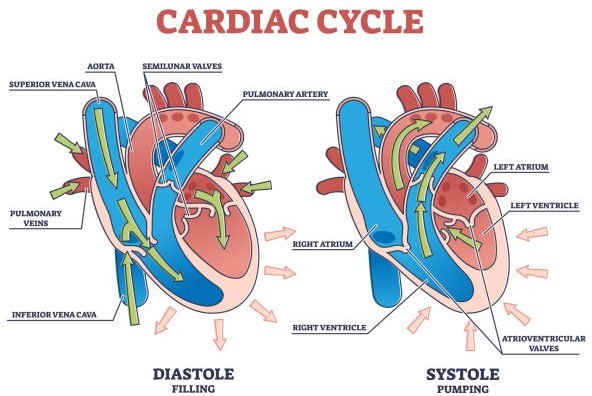 the oxygenated blood from lungs via pulmonary veins and pumps it into the most robust left ventricle which propels the oxygen rich blood to rest of the body via aorta, the largest artery. This cycle is completed in about 0.8 seconds in a healthy heart, implying 72 cardiac cycles per minute.2,3,6,7
the oxygenated blood from lungs via pulmonary veins and pumps it into the most robust left ventricle which propels the oxygen rich blood to rest of the body via aorta, the largest artery. This cycle is completed in about 0.8 seconds in a healthy heart, implying 72 cardiac cycles per minute.2,3,6,7
1.4 Blood vessels crucial for the cardiac cycle are of three types – arteries (which carry blood away from the heart), veins (that carry blood towards the heart), and capillaries (a network of tiny blood vessels connecting arteries to veins). They are like plumbing pipes that run through a building, to enable blood flow, covering 60,000 miles in the body. For the most part, arteries always carry oxygen-rich blood away from the heart and veins carry oxygen-poor blood to the heart, exceptions being the pulmonary artery and pulmonary veins (para 1.3 above); the heart receives nutrients through a network of coronary arteries on its surface.2,4,8
1.5 Cardiac conduction system, like a power circuit in a building, is a network of nodes, cells, and signals, and controls the rhythm and speed of our heart rate. Each time our heart beats, electrical signals travel through the heart inducing it to contract and expand; sinoatrial node is heart’s natural pacemaker responsible for initiating the heartbeat. One complete heart beat coincides with every cardiac cycle having two main phases: systole when the heart pushes the blood around the body putting pressure on the blood vessels, the blood pressure is at its highest indicated by the top number in BP reading; diastole is when the heart relaxes between beats and gets filled with blood, blood pressure drops as indicated by the bottom number in BP reading. The balance between the two determines the BP of a person, 120/80 considered normal. What you hear as ‘heartbeat’ is the sound of heart valves closing during these processes in each cardiac cycle (for our article on blood pressure, refer to vol 8 #6).2,5,9,10,11
A range of conditions affect the heart, its valves, muscle, and electrical system, as well as the blood vessels. If the heart is not healthy, the body will not get enough blood, oxygen, and nutrients.12,13
2. Heart ailments
2.1 CAD (coronary artery disease), is a silent killer, most common and well known as coronary or ischemic heart disease. It is caused by Atherosclerosis, a condition when sticky “plaque” builds up gradually in arteries 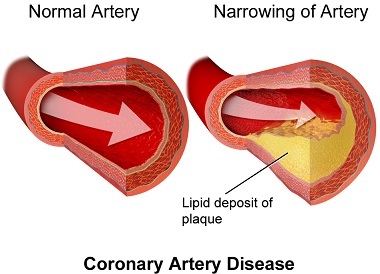 throughout the body narrowing or blocking the blood flow. Plaque is formed when fats, bad cholesterol, calcium, cellular waste, and fibrin, a substance that helps blood clot, accumulate and harden over time. As arteries in heart narrow and become stiff, one may have mild symptoms like chest pain or discomfort that comes and goes in a predictable pattern (angina), normally noticed during physical activity or emotional distress; it goes away with rest and a nitroglycerine tablet. Shortness of breath during light physical activity is another symptom (dyspnea) when chest feels tight and one gasps for air. Atherosclerosis symptoms can vary depending on which arteries are affected; if in arteries leading to brain, it will be transient ischemic attack (TIA) with symptoms of numbness or weakness in arms and legs, slurred speech, drooping muscles in face, and temporary loss of vision in one eye, which if untreated can lead to a stroke. When arteries in the limbs are affected, especially legs, it is peripheral arterial disease (PAD) (for details refer to vol 2 #5). CAD can be decelerated or managed with life style changes and medications; some studies show it is reversible. CAD can also lead to other heart ailments like heart attack, abnormal heart rhythm, or heart failure.12-18
throughout the body narrowing or blocking the blood flow. Plaque is formed when fats, bad cholesterol, calcium, cellular waste, and fibrin, a substance that helps blood clot, accumulate and harden over time. As arteries in heart narrow and become stiff, one may have mild symptoms like chest pain or discomfort that comes and goes in a predictable pattern (angina), normally noticed during physical activity or emotional distress; it goes away with rest and a nitroglycerine tablet. Shortness of breath during light physical activity is another symptom (dyspnea) when chest feels tight and one gasps for air. Atherosclerosis symptoms can vary depending on which arteries are affected; if in arteries leading to brain, it will be transient ischemic attack (TIA) with symptoms of numbness or weakness in arms and legs, slurred speech, drooping muscles in face, and temporary loss of vision in one eye, which if untreated can lead to a stroke. When arteries in the limbs are affected, especially legs, it is peripheral arterial disease (PAD) (for details refer to vol 2 #5). CAD can be decelerated or managed with life style changes and medications; some studies show it is reversible. CAD can also lead to other heart ailments like heart attack, abnormal heart rhythm, or heart failure.12-18
2.2 Heart attack (myocardial infarction): One may have no symptoms at all until the plaque suddenly ruptures and triggers a blood clot (coronary thrombosis), like a concrete barrier in the middle of the road, restricting the blood flow leading to a heart attack, a medical emergency! It means the 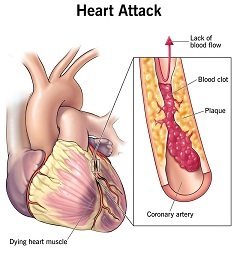 heart muscle has begun to die due to inadequate blood flow. The characteristic symptoms of a heart attack are: mild, squeezing, heaviness, or crushing pain in chest radiating to one or both arms, shoulder, neck, jaw or back; it is sometimes mistaken as heartburn or indigestion; some may have only shortness of breath, nausea, or sweating, sometimes with palpitations and dizziness. Risk factors are old age, lifestyle, smoking, family history, and certain health conditions like diabetes, obesity, hypertension, and high cholesterol. For warning signs of a heart attack, refer to vol 1 #1 & vol 4 #1.12,13,19-22
heart muscle has begun to die due to inadequate blood flow. The characteristic symptoms of a heart attack are: mild, squeezing, heaviness, or crushing pain in chest radiating to one or both arms, shoulder, neck, jaw or back; it is sometimes mistaken as heartburn or indigestion; some may have only shortness of breath, nausea, or sweating, sometimes with palpitations and dizziness. Risk factors are old age, lifestyle, smoking, family history, and certain health conditions like diabetes, obesity, hypertension, and high cholesterol. For warning signs of a heart attack, refer to vol 1 #1 & vol 4 #1.12,13,19-22
2.3 Arrhythmia implies abnormal heart rhythms - too fast, or too slow, irregular, or erratic, that can begin in any chamber of the heart and prevent it from contracting, relaxing, and pumping blood normally. Causes could be underlying heart disease, electrolyte imbalance, or thyroid dysfunction. Two types of abnormal heart rates, 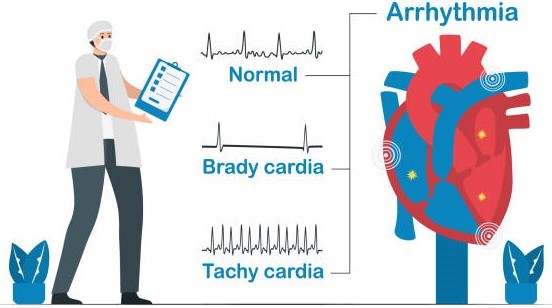 though not always a cause for concern, are: bradycardia when heart beats slower than 60 per minute, commonly during sleep and in athletes; tachycardia when it beats faster than 100 per minute like when we exercise. Address immediately, if symptoms of a heart disease arise like chest pain, palpitations (pounding or racing heart), sweating, shortness of breath, lightheadedness, neck pain, heartburn or indigestion, nausea or vomiting, difficulty sleeping, or inability to handle exercise.12,13,23-25
though not always a cause for concern, are: bradycardia when heart beats slower than 60 per minute, commonly during sleep and in athletes; tachycardia when it beats faster than 100 per minute like when we exercise. Address immediately, if symptoms of a heart disease arise like chest pain, palpitations (pounding or racing heart), sweating, shortness of breath, lightheadedness, neck pain, heartburn or indigestion, nausea or vomiting, difficulty sleeping, or inability to handle exercise.12,13,23-25
2.4 Cardiomyopathy is a disease in which myocardium (heart muscle) stiffens, weakens, enlarges, thickens, or develops scar tissue (new tissue, thicker and less flexible than original, formed as part of healing process 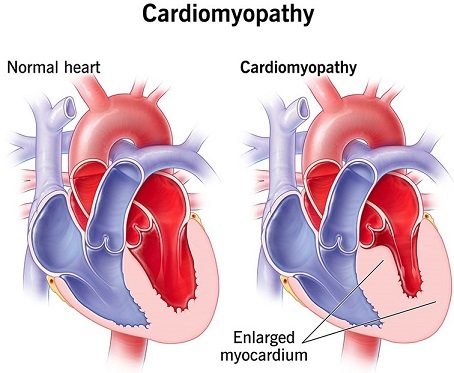
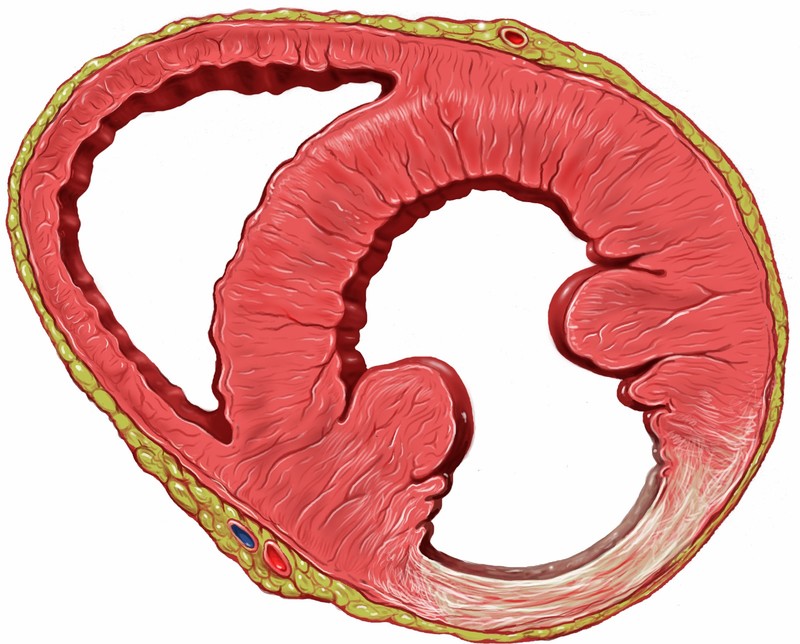 after an injury, infection, or surgery), affecting the ability of the heart to pump blood effectively. Symptoms are fatigue, palpitations, and shortness of breath. Cardiomyopathy can eventually lead to heart failure.12,13,26
after an injury, infection, or surgery), affecting the ability of the heart to pump blood effectively. Symptoms are fatigue, palpitations, and shortness of breath. Cardiomyopathy can eventually lead to heart failure.12,13,26
2.5 Heart failure is a syndrome in which fluid accumulates in the body, often in lungs, legs and feet. This can occur due to the diminished ability of the heart to pump blood effectively (eg, cardiomyopathy). Here, though the heart is working, it is very weak or stiff. Heart failure mostly causes breathlessness on 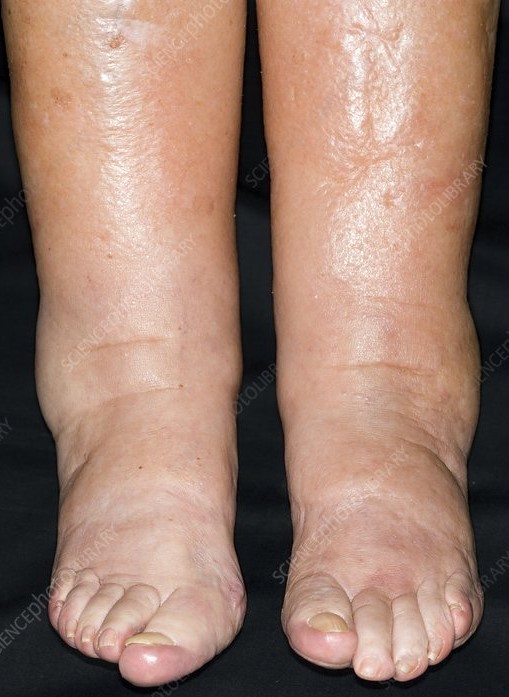 exertion, swelling especially in legs and feet, sudden attack of dyspnea at night, weight gain due to water retention, persistent cough, or nocturnal urination in some.12,13,27-29
exertion, swelling especially in legs and feet, sudden attack of dyspnea at night, weight gain due to water retention, persistent cough, or nocturnal urination in some.12,13,27-29
2.6 Cardiac arrest is when heart stops pumping blood and stops beating, patient collapses and becomes unresponsive. Apart from an underlying heart disease, any health issue, drug, injury, or trauma that reduces the volume of blood or lowers oxygen level in the body, can cause it. It can be fatal if immediate treatment like cardiopulmonary resuscitation (CPR) or automated external defibrillator (AED) is not given to revive the cardiac electrical system to restore normal heart rhythm. AED is a portable electronic device to analyse the heart rhythm and, if necessary, deliver an electrical shock to restore normalcy, designed for use by a layperson with clear step-by-step instructions to guide the user.12,30
2.7 Valvular heart disease is: damage to one or more heart valves, making them narrow restricting blood flow (stenosis) or leaky causing the blood flow backward (regurgitation), prolapse of valve between left atrium and 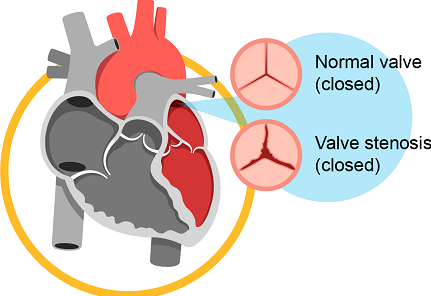
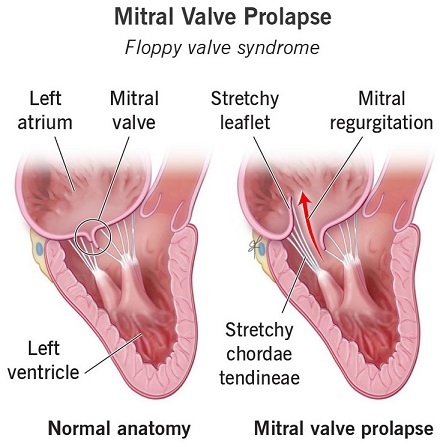 ventricle, or defect in valve from infancy (eg, atresia). These can make heart work harder, affect blood circulation, and lead to other heart diseases.12,13,31
ventricle, or defect in valve from infancy (eg, atresia). These can make heart work harder, affect blood circulation, and lead to other heart diseases.12,13,31
2.8 Aneurysm means a weak region in the wall of an artery which bulges outwards like a balloon and can break open (rupture) or form blood clots; it can happen in any artery and can be life-threatening. Mostly, one is not aware of it; symptoms of a ruptured aneurysm come on suddenly - light headedness, rapid 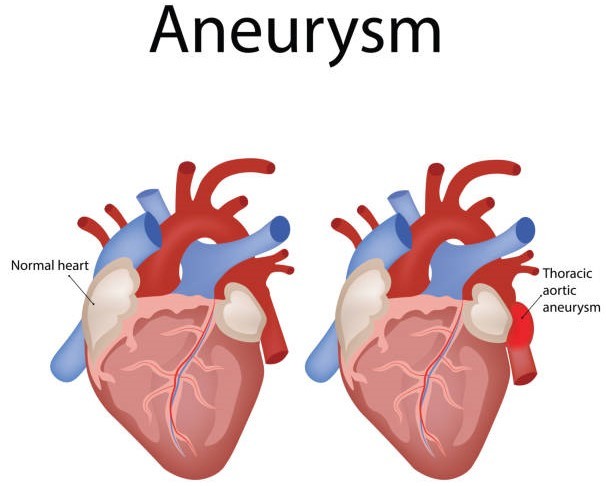
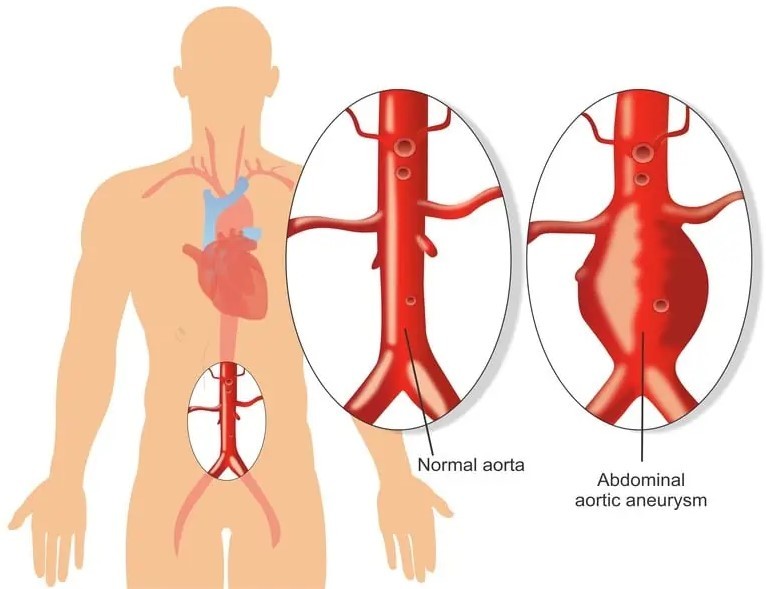 heartbeat, sudden severe pain in head, chest, abdomen or back, or sudden loss of consciousness following a severe headache.13,32
heartbeat, sudden severe pain in head, chest, abdomen or back, or sudden loss of consciousness following a severe headache.13,32
2.9 Congenital heart defects are structural problems in heart from birth like a hole in heart’s septum, problems in valves or blood vessels. Symptoms are bluish skin, lips, or nails that may start at birth or later, excessive sleepiness, fast or troubled breathing, unusual fatigue, heart murmur indicating 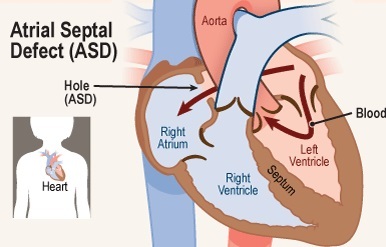 abnormal blood flow, and weak pulse.33
abnormal blood flow, and weak pulse.33
2.10 Heart infections can occur when microbes invade the heart and affect the heart muscle, valves, or membranes, due to poor dental hygiene, or dental or other procedures, or other diseases; sometimes, after a heart surgery. It is 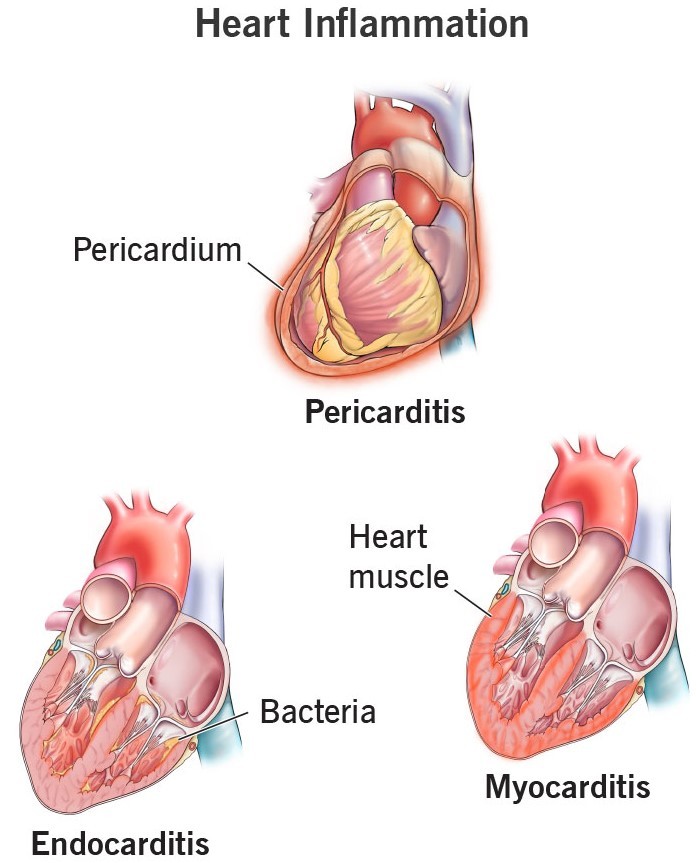 common in those who use injected recreational drugs.34,35
common in those who use injected recreational drugs.34,35
3. Feel your pulse
3.1 Heart rate: A healthy heart beats 72 times per minute, a sign we are alive and fit! When one is relaxed, 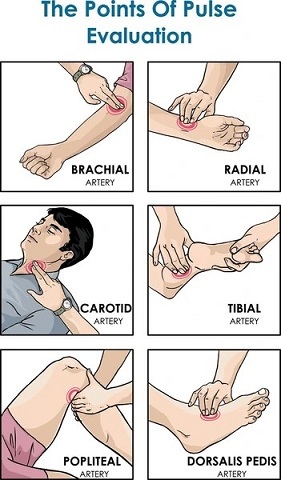
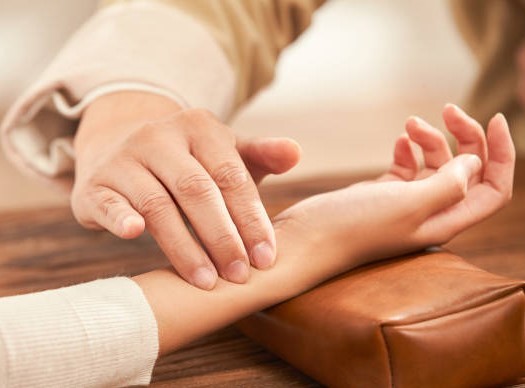 the resting heart rate is normally between 60-100 beats per minute. We hardly hear the subtle sound except through an instrument but can feel the pulse on our wrist or neck to know. It can be influenced by age, fitness level, stress, and medications.36
the resting heart rate is normally between 60-100 beats per minute. We hardly hear the subtle sound except through an instrument but can feel the pulse on our wrist or neck to know. It can be influenced by age, fitness level, stress, and medications.36
3.2 To check pulse:
- Turn your hand so that your palm is facing upwards.
- Place the three middle fingers from your other hand on your wrist in the outside groove below the base of your thumb.
- Press lightly to feel the pulse under your fingers. If you can't feel anything press slightly harder.
- Count each beat for a total time of 30 seconds.
- Double the number of beats you counted. This is your heart rate or pulse, measured in beats per minute.36
4. First aid in heart attack, failure or cardiac arrest37
4.1 Cardiopulmonary Resuscitation (CPR):
- Push hard and fast on the person's chest — about 100 to 120 pushes a minute with both palms placed one over the other. The pushes are called compressions.
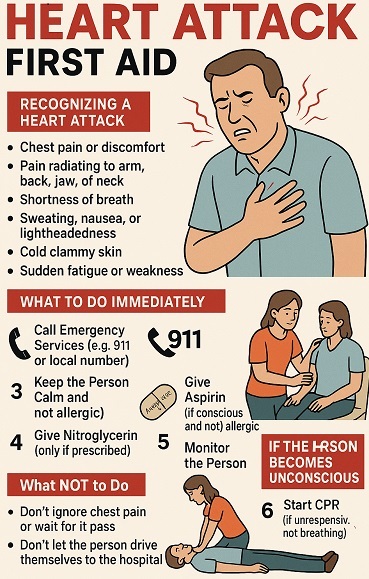 If trained in CPR, check the person's airway, then deliver rescue breaths after every 30 compressions.
If trained in CPR, check the person's airway, then deliver rescue breaths after every 30 compressions.- If not trained, just continue chest compressions. Allow the chest to rise completely between each push.
- Keep doing this until medical help is obtained.
4.2 To survive heat attack when alone, refer to vol 2 #5.38
5. Tips for heart-care39-42
- Eat wisely & mindfully: Remain hydrated with fresh water; favour whole plant-based foods, nuts & seeds, fibre-rich meals; limit sugar, salt, and unhealthy fats; avoid alcohol, smoking, vaping, tobacco.
- Stay active & joyful: Walk briskly 30 mins a day; add yoga or chores like gardening; make extra effort to help others; stay socially connected. Joyful activity is heart medicine.
- Sleep well: Good sleep and recreation are just as essential as exercise.
- Prevent infections: Good dental hygiene helps prevent heart infections - gum disease is a risk factor.
- Monitor regularly: Check BP, blood sugar, and cholesterol periodically.
Final word: Have reachable goals to lead an optimum lifestyle with healthy choices and feel the happiness within!
References and Links
- “Food, the heart and the mind”—Sathya Sai Baba, Divine Discourse, 21 January 1994: https://www.sssbpt.info/ssspeaks/volume27/sss27-03.pdf
- Know your heart!: https://my.clevelandclinic.org/health/body/21704-heart
- https://www.narayanahealth.org/blog/heart-anatomy-and-function
- https://my.clevelandclinic.org/health/body/circulatory-and-cardiovascular-system
- Structure & Function of heart with video: https://kidshealth.org/en/parents/heart.html#
- https://www.webmd.com/heart-disease/high-cholesterol-healthy-heart
- Cardiac cycle: https://byjus.com/biology/cardiac-cycle/
- Blood vessels: https://my.clevelandclinic.org/health/body/21640-blood-vessels
- Heart conduction system: https://my.clevelandclinic.org/health/body/21648-heart-conduction-system
- Systole & Diastole: https://www.medicalnewstoday.com/articles/321447
- Blood pressure: https://news.vibrionics.org/en/articles/234
- Heart disease: https://my.clevelandclinic.org/health/diseases/24129-heart-disease
- https://www.mayoclinic.org/diseases-conditions/heart-disease/symptoms-causes/syc-20353118
- CAD: https://my.clevelandclinic.org/health/diseases/16898-coronary-artery-disease
- Atherosclerosis: https://www.mayoclinic.org/diseases-conditions/arteriosclerosis-atherosclerosis/symptoms-causes/syc-20350569#
- https://www.mayoclinic.org/diseases-conditions/peripheral-artery-disease/symptoms-causes/syc-20350557
- PAD: vol 2 #5, Sept 2011: https://news.vibrionics.org/en/articles/92
- Reverse CAD: https://www.health.harvard.edu/heart-health/ask_the_doctor_is_it_possible_to_reverse_coronary_artery_disease
- Heart attack: https://my.clevelandclinic.org/health/diseases/16818-heart-attack-myocardial-infarction
- Coronary thrombosis: https://www.medicalnewstoday.com/articles/coronary-thrombosis#symptoms
- 8 Warning signs of heart attack: vol4 #1, Jan-Feb 2013: https://news.vibrionics.org/en/articles/149
- Signs of a heart attack: Vol1 #1 Sept 2010; https://news.vibrionics.org/en/articles/91
- Arrhythmia: https://my.clevelandclinic.org/health/articles/23489-circulatory-system-diseases
- https://my.clevelandclinic.org/health/diseases/16749-arrhythmia
- https://www.medicalnewstoday.com/articles/tachycardia-vs-bradycardia
- Cardiomyopathy: https://my.clevelandclinic.org/health/diseases/16841-cardiomyopathy
- Heart failure: https://my.clevelandclinic.org/health/diseases/17069-heart-failure-understanding-heart-failure
- https://www.heart.org/en/health-topics/heart-failure/warning-signs-of-heart-failure
- Heart failure video pictorial: https://watchlearnlive.heart.org/index.php?moduleSelect=hrtflr
- Cardiac arrest: https://my.clevelandclinic.org/health/diseases/21736-cardiac-arrest
- Heart Valve: https://my.clevelandclinic.org/health/diseases/17639-what-you-need-to-know-heart-valve-disease
- Aneurysm: https://my.clevelandclinic.org/health/diseases/22769-aneurysm
- Congenital: https://my.clevelandclinic.org/health/diseases/21674-congenital-heart-disease
- Heart infections: https://my.clevelandclinic.org/health/diseases/22054-heart-infection
- https://www.mayoclinic.org/diseases-conditions/endocarditis/symptoms-causes/syc-20352576
- Feel the pulse! https://www.heartfoundation.org.nz/wellbeing/managing-risk/how-to-check-your-pulse-heart-rate
- First aid in heart attack: https://www.mayoclinic.org/diseases-conditions/sudden-cardiac-arrest/symptoms-causes/syc-20350634
- Survive heat attack when alone: Vol 2 #5 Sept 2011; https://news.vibrionics.org/en/articles/92
- Tips to prevent heart disease: https://health.ucdavis.edu/blog/cultivating-health/7-steps-you-can-take-to-help-prevent-heart-disease/2023/04
- https://www.mayoclinic.org/diseases-conditions/heart-disease/in-depth/heart-disease-prevention/art-20046502
- https://www.mayoclinic.org/diseases-conditions/heart-disease/in-depth/heart-healthy-diet/art-20047702
- High fibre diet: vol 4 #3, May-June 2013: https://news.vibrionics.org/en/articles/155
2. Meetings, Camps & Clinics
West London Group (UK) Virtual Meeting – 18 May 2025
At the instance of the UK coordinator02822, West London Vibrionics Group held its virtual meeting on 18 May 2025, attended by 20 participants from the UK and overseas. Expressing gratitude for the submissions received, Dr Aggarwal inspired the participants to send more of their cases and extraordinary experiences and make the centenary offering memorable and also strengthen SVIRT by renewing their associateship.
This was followed by two enriching power point presentations*. The first one was a continuation on “dementia”, with strategies for prevention supported by practical exercises, demonstrated by the practitioner02802. The second one00534 was about effective usage of the 12 Biochemic Tissue Salts (SR253-SR264) to restore mineral balance as well as address physical and emotional imbalances.
Practitioner02894 inspired everyone present with her example of serving patients while away from home. During a visit to Mauritius, she was contacted about a patient with breast cancer. She immediately coordinated with a UK practitioner who mailed the remedy, which arrived within five days. The patient’s tumour shrank, enabling doctors to safely remove the lump.
Practitioner02862, in a written message read during the meeting, encouraged her peers to assist and learn from more experienced practitioners. She shared how working closely with an experienced senior practitioner greatly deepened her own understanding and practice.
The participants were delighted by an enlightening first-hand experience shared by a special guest Dr Pabani, a Harley Street Pain Specialist, on the effectiveness of potentised Prednisolone – a steroid. He was introduced to the system at a medical camp in Sierra Leone by Practitioner02799. He was amazed when spraying potentised Prednisolone on a patient’s knees brought relief within 15 seconds. He also described how a persistent 3-week cough of a pregnant woman stopped almost instantly after a few sprays. He also shared a video on belly fat reduction and demonstrated a simple exercise for fibromyalgia.
The meeting concluded with Aarthi to Swami.
*Power Presentations on Dementia and Using Tissue salts can be accessed through Forms > Download option on our practitioners’ site https://practitioners.vibrionics.org.
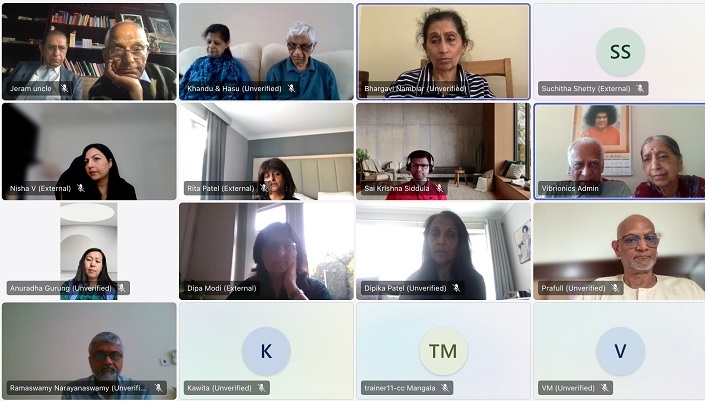
3. From the Diary of Dr Jit K Aggarwal -- Uncovering the Root: A Lesson in Vibrational Insight
Continuing my journey of discovering the importance of identifying the root cause of illness, I’d like to share another fascinating case, one that unfolded around Sai Baba’s birthday celebrations in November 2001. A 40-year-old overseas devotee approached me seeking relief from persistent lower back pain, which had been troubling him for the past 4 to 5 months. He shared that the pain worsened when sitting on the floor for extended periods during darshan.
I gave him a standard back pain remedy using the SRHVP. However, when he returned a week later, there had been no improvement whatsoever. This prompted me to pause and dig deeper into his personal history. I asked if there had been any recent changes in his diet or lifestyle. That’s when he suddenly remembered something important: during his previous visit to Prasanthi Nilayam, after hearing Swami speak on the adverse effects of non-vegetarian food, he had immediately stopped consuming meat. Until then, his body had been accustomed to that diet.
This was a revelation; I realised that his body, conditioned to a long-standing dietary routine, had undergone a sudden shock, and the back pain was likely a manifestation of that disruption. I immediately revised the remedy to NM25 Shock - TDS for one week, followed by OD for two more weeks. The results were remarkable. Within two weeks, he reported dramatic improvement, and just a few days before his return home, he was completely free of pain.
This experience was a powerful reminder that the true cause of illness may lie beyond the obvious. It could stem not only from physical, emotional, or mental trauma, but even from something as seemingly simple as a sudden dietary shift. It reinforced my conviction that deep listening, guided inquiry, and Swami’s grace are essential for true healing through Vibrionics.
4. Chanting for the Planet: A Vibrionics Offering with Sai Gayatri
On 15 June 2025, the Collective Chanting Initiative for Global Peace, organised by the Sri Sathya Sai Media Centre as part of Bhagawan’s Centenary celebrations, brought together hundreds of vibrionics practitioners from India and across the world. This unique event combined the sacred vibrations of an hour-long Sai Gayatri chanting with the healing energy of a specially prepared vibrionics remedy. SRHVP users prepared SM1 Removal of Entities + SM2 Divine Protection + SM4 Stabilising + SM5 Peace and Love Alignment + SM6 Stress + SM16 Cleansing which was broadcasted using the SRHVP by placing the remedy bottle in the ‘sample’ well and a photo of mother earth in the ‘remedy well’, setting the dial at 573 (1M potency). Other practitioners prepared CC10.1 Emergencies + CC15.2 Psychiatric disorders + CC17.2 Cleansing using the 108CC Box. A bottle of this remedy was kept on the photo of Mother Earth placed at Swami’s lotus feet.
Many practitioners from across the globe confirmed their participation; the countries included Argentina, Croatia, France, Greece, India, Italy, Nepal, Poland, Qatar, Romania, South Africa, Trinidad & Tobago, UK, USA and Zimbabwe.
The initiative aimed to harness the synergistic power of sound and subtle energy by aligning mantric vibrations with vibrionics remedies to promote global peace, inner calm, and collective well-being. This event stood as a shining example of how sound and vibrational healing, when offered in devotion, can transcend borders and uplift humanity as one global family.
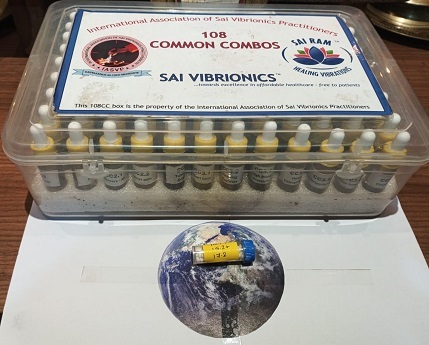
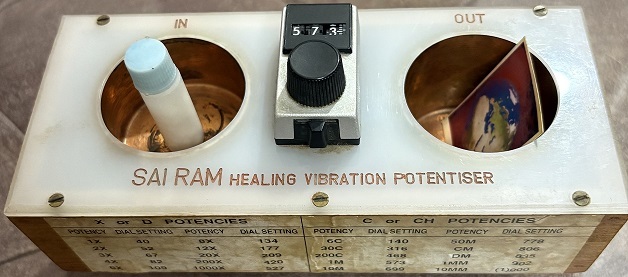
5. In Memoriam
We are deeply saddened to announce the passing of Sri K Kamalanabha10681…India from Karnataka on 19 April 2025 at the age of 67. A bachelor and retired banker, he was deeply devoted to Sai Baba and dedicated his life entirely to Swami’s service. As the Convener of the Sai Seva Samithi in Bellary, he was known and loved by fellow devotees for his gentle heart, and unwavering commitment to seva. A gifted bhajan singer, on the evening of 19 April, after returning home from his regular weekly bhajan at the Samithi, he felt unwell and succumbed to a sudden heart attack. He began his Vibrionics journey in 2011, and in his early years, he actively conducted vibro camps in nearby villages alongside his fellow practitioner10682. He treated many patients with compassion and selflessness, always diligently submitting his monthly seva reports, a mark of his disciplined and sincere approach. We offer our heartfelt prayers for his soul's onward journey and express our deepest gratitude for his legacy of devotion.
With deep sorrow, we announce the passing of Sri Suraj Unnikrishnan11261…India from Kerala on 11 May 2025 at the age of 52, after a brave battle with stomach cancer. He became a Vibrionics practitioner in 2012 and served with quiet dedication throughout his journey. He played a pivotal role in initiating Vibrionics camps at Shoranur and Palakkad Sai Centres, bringing healing and hope to many in his region. A devoted follower of Sai Baba, he was deeply involved in the activities of the SSSO for many years. He served as the Spiritual Coordinator of Palakkad Samithi and, until January 2025, held the responsibility of Kerala State In-Charge for the Vidya Vahini programme, an initiative close to his heart. Known for his soft-spoken nature and peaceful disposition, he was loved by all who knew him. He leaves behind, his loving wife and son, along with a legacy of selfless service and spiritual discipline. He will be sadly missed by his family, friends, and fellow Sai brothers and sisters.
